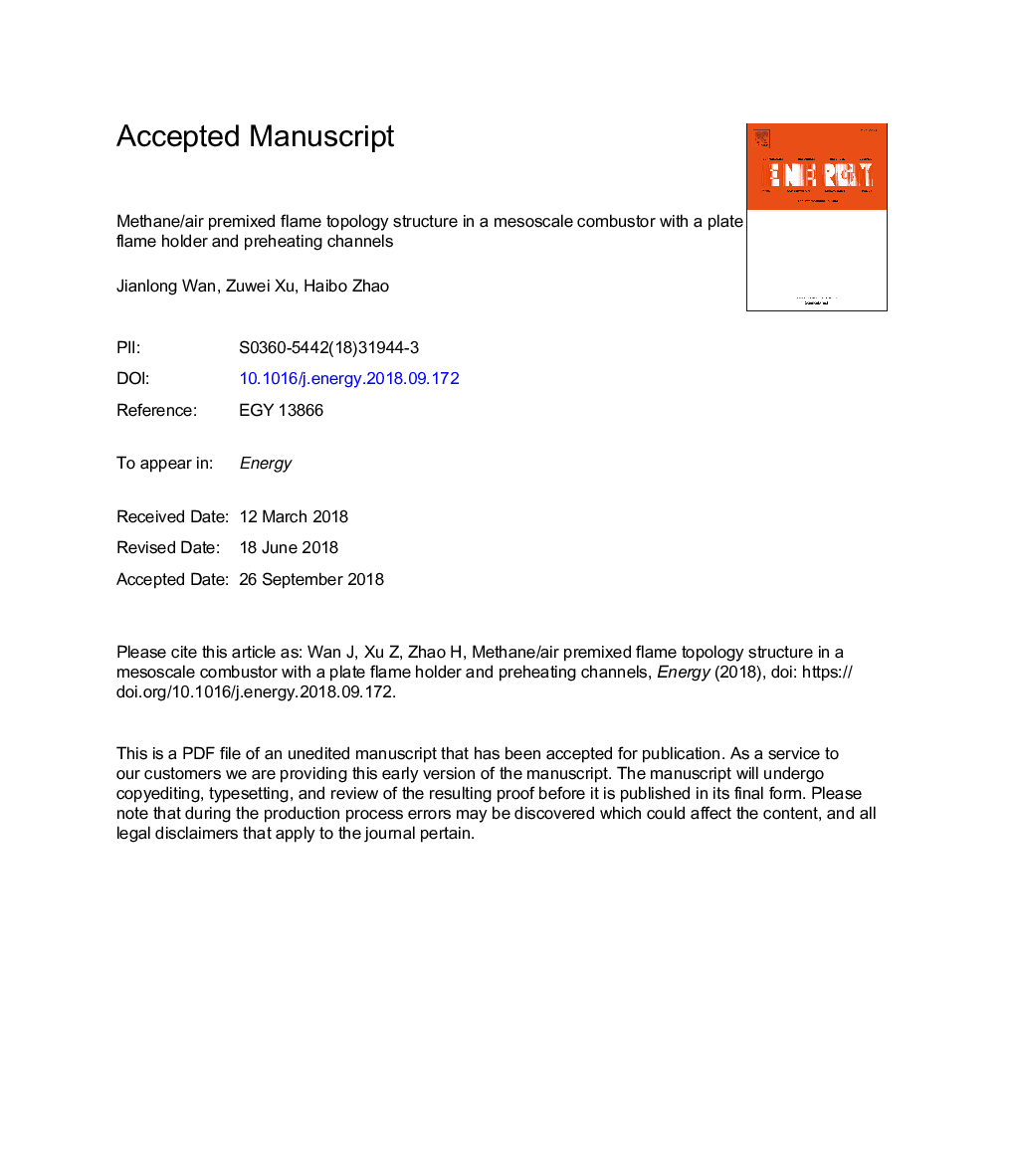| Article ID | Journal | Published Year | Pages | File Type |
|---|---|---|---|---|
| 11015695 | Energy | 2018 | 28 Pages |
Abstract
A combustor with a plate flame holder and preheating channels, which is expected to take advantage of both heat recirculation and flow recirculation, was manufactured. The laminar premixed flame topology structures were studied experimentally and numerically. Experimental results showed that this special configuration performs excellently in flame-anchoring, and the flame can maintain steadily symmetrical at equivalence ratios as low as 0.425. One 'U-shaped' flame root and a constricted 'waist' near the middle of the flame front were observed under very small equivalence ratio. A three-dimensional numerical simulation, which was able to reproduce the flame topology structure with high accuracy, was conducted to better understand the flame topology structures. The flame topology structures were analysed quantitatively using multiple transverse and longitudinal sections. The shapes of the flame front near the middle region form 'S' patterns, while the 'C' style occurs very near the side walls. The flame front at the longitudinal plane near the centre of the combustor is almost straight, but the flame front near the side wall is obviously bending. In addition, the flames near the side wall not only shift downstream but also move towards each other. The above effects can significantly affect the flame topology structures.
Related Topics
Physical Sciences and Engineering
Energy
Energy (General)
Authors
Jianlong Wan, Zuwei Xu, Haibo Zhao,
